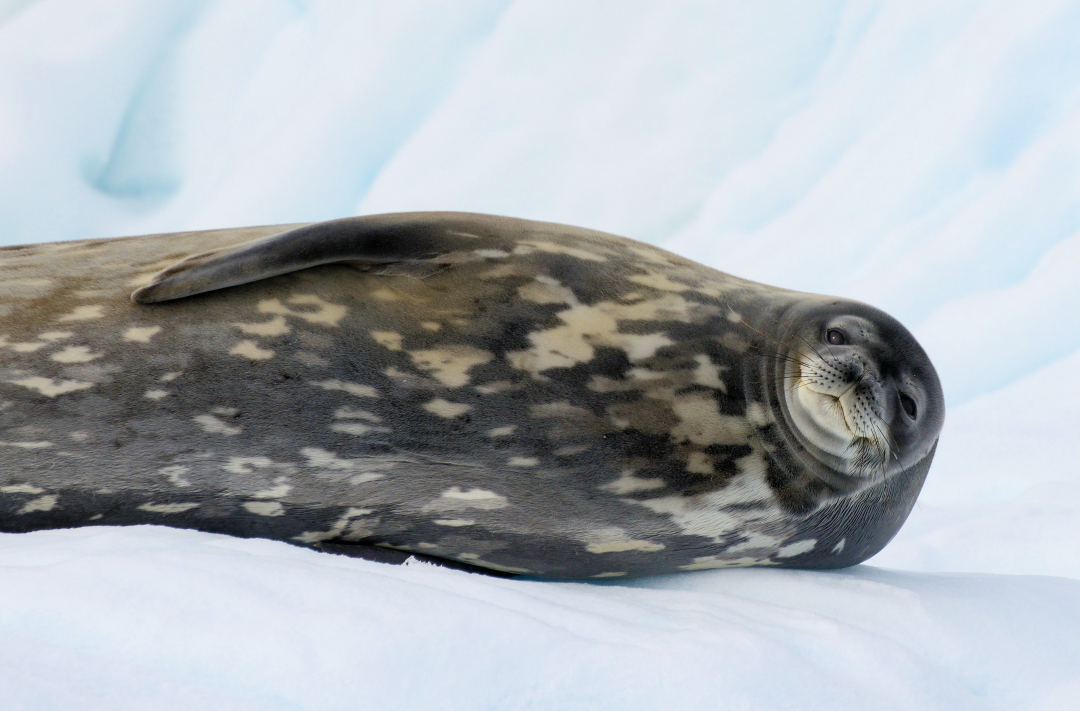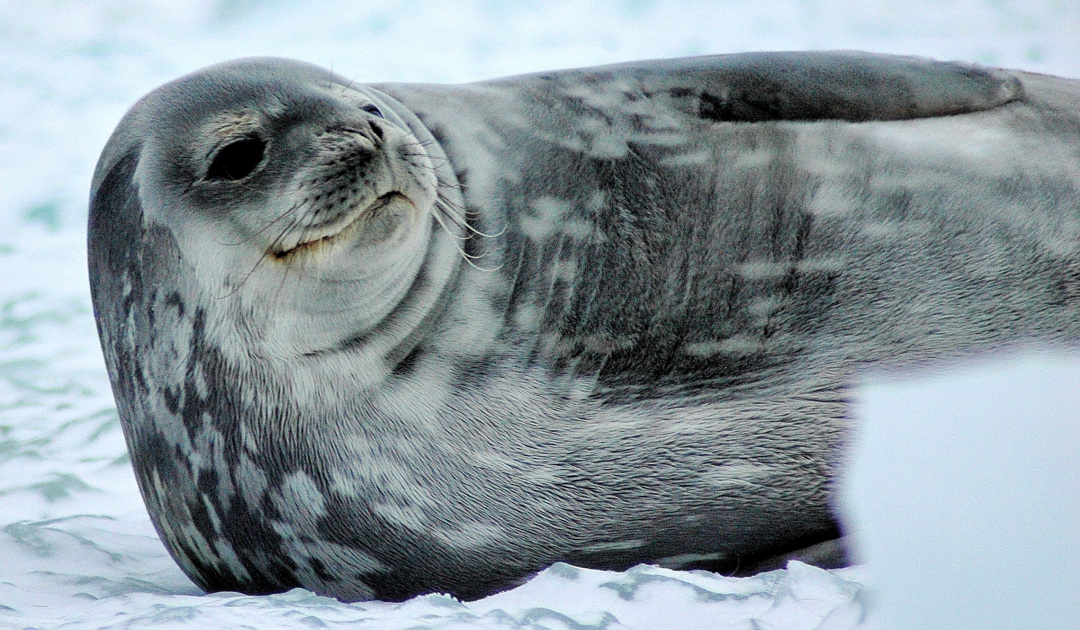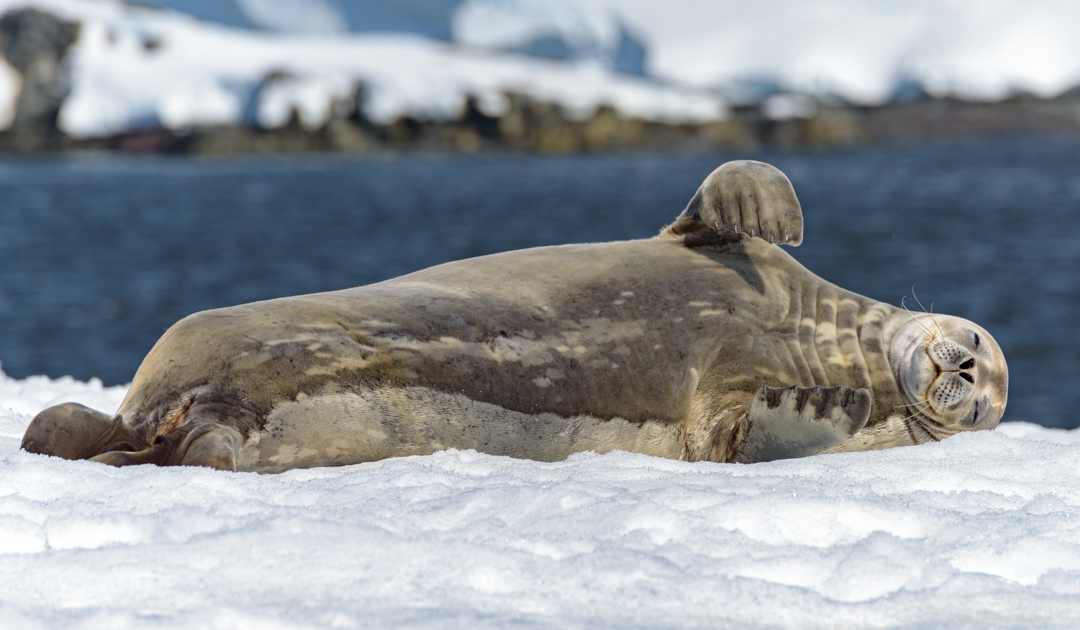
Weddell seals live around the Antarctic continent and are among the best-studied marine mammals in the world. Yet, there have been no estimates of the size of their total population. Now, for the first time, a multidisciplinary team of researchers led by the University of Minnesota Twin Cities has estimated the total global number of seals in a recent study and found that a much higher population had previously been assumed. The count was done using satellite imagery, much of which was analyzed by Citizen Scientists. In addition, the data provided new insights into the preferred habitat of Weddell seals.
Weddell seals (Leptonychotes weddellii) share the habitat on the Antarctic fast ice and in the waters around the continent with emperor penguins (Aptenodytes forsteri). Both species are perfectly adapted to the extreme environmental conditions and are very sensitive to change, making them indicator species in the Southern Ocean. Michelle LaRue, a research associate at the University of Minnesota in the Department of Earth and Environmental Sciences and lead author of the study, explains, “As the climate continues to change, we might expect that fast ice to change as well. So if we understand where the seals are and how many there are, that gives us an idea of how the ecosystem might be changing.”
The number of Weddell seals is also an indicator of the availability of their most important prey, the Antarctic toothfish (Dissostichus mawsoni), which is fished commercially and ends up on the plate as Chilean sea bass, LaRue said. At more than two meters in length and weighing more than 150 kilograms, the Antarctic toothfish is the largest fish predator in the Southern Ocean and an important component of the Antarctic ecosystem.

The study, published in the journal Science Advances, is the first direct population estimate ever conducted to determine the global distribution of a wildlife species with such an extensive range. The goal of the study was to learn more about how climate change and fishing in Antarctic waters affect seal numbers and the overall ecosystem over time. The researchers relied on the assistance of more than 330,000 international volunteer citizen scientists to conduct the count. They used high-resolution satellite imagery as a basis, on which the scientists and volunteers marked each seal on the ice.
“There is absolutely no other way we could’ve done an accurate count of Weddell seals,” said Leo Salas, co-author of the study and senior scientist at Point Blue Conservation Science. “Even though our team includes seasoned researchers who know how to count seals on the images, it would have taken many years for our small team to search all the images. We also haven’t been able to use automated tools because the human eye is still more accurate than any computer algorithm.”
Thanks to the citizen scientists, however, researchers now have the data to train computers to automate future counts that will give them more information about this important species, Salas said.
As a result, the researchers obtained an estimated total Weddell seal population of 202,000 females. Male seals were not visible in the images because in November, when the satellite images were taken, they were under the ice in the water defending their territory. So, in contrast to earlier estimates of about 800,000 female Weddell seals, the actual population is much smaller.
“That doesn’t necessarily mean there has been a big decrease of Weddell seals recently, but instead this is probably a more accurate count that we can use as a baseline to determine change over time,” Michelle LaRue said. “We’ve also developed an efficient process for monitoring them to see if the population has changed from this baseline. Tracking the population of seals against this benchmark is critical for conservation efforts.”

In addition, the researchers also gained new insights into which habitat the seals prefer. Apparently, they mainly stay near the mainland coast or not far from deep water, possibly because of the good availability of food. They also seem to prefer the proximity of emperor penguins, at least as long as there are not too many penguins. LaRue thinks it’s good for the seals “to be near Emperor penguins but only if the penguin colony size doesn’t get too big and there is not too much competition for food.”
According to LaRue, this method of counting can easily be repeated, say in five or ten years, to better understand the effects of climate change and commercial fishing based on the population trends of the seals.
Julia Hager, PolarJournal
More on the subject:





